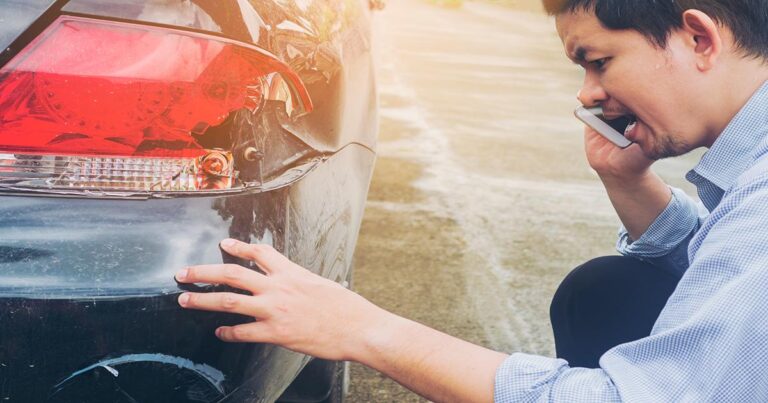What Happens if You Hit a Road Sign?
If you hit a road sign, you must stop and report the damage; failing to do so can result in fines or hit-and-run charges. Many drivers may overlook a bent or knocked-down sign, but the law treats this as damage to public property. In the U.S., you are expected to follow standard accident protocols: pull over safely, check for injuries, and notify authorities. Road signs guide traffic and protect safety, so their damage must be corrected promptly. Even seemingly minor incidents can have serious safety and legal consequences. This article explains the steps to take after hitting a sign and the possible outcomes. We also cover related questions: how often police investigate sign damage, what happens if you leave the scene, and whether taking road signs is legal.
Immediate Steps After a Sign Collision
- Ensure safety and check for injuries. If your car can be moved, pull off to a shoulder or safe spot. Turn on hazard lights and make sure no one is hurt. Call 911 immediately if anyone needs medical help.
- Document the scene. Photograph or video the damaged sign, your vehicle, and the surrounding roadway. Note any skid marks or debris. Clear evidence can help with police reports and insurance claims.
- Notify authorities. Call the police or the road agency (city public works, county highway department, or state DOT) responsible for the area. Progressive advises using the non-emergency police number or contacting the road department to report the damage. If a critical sign (such as a stop sign) is down or the crash creates a hazard, dial 911.
- Exchange information or file a report. If another driver or a witness is present, exchange names, contact info, and insurance details. Otherwise, check local requirements: many states require filing an accident report for significant damage. For example, Nevada law mandates reporting any crash with over $750 in damage. File a police report if required by law.
- Stay at the scene. U.S. laws require you to remain at the scene of any crash you cause. Do not drive away until police or maintenance crews arrive or until you’ve given the necessary information.
- Notify your insurer. Contact your auto insurance company to report the incident. Collision coverage (if you have it) will cover repairs to your car. Your liability coverage should pay to replace the damaged sign. If the total damage (your car plus the sign) is below your deductible, you may choose to pay out of pocket to avoid a claim.
- Get documentation. If police or repair crews respond, ask for a report or reference number. Having a record of the crash helps with insurance and any reimbursement to the city or state.
- Cooperate with responders. If an officer arrives, answer questions truthfully. They may issue a citation for any traffic violation (for example, “failure to maintain control of the vehicle”) that contributed to the crash.
After you follow these steps, the responsible agency will typically send crews to fix or replace the sign. They will then bill your insurance (or you, if uninsured) for the cost. Good documentation and cooperation make this process smoother.
Insurance and Repair Costs
Damaging a road sign is treated like any single-vehicle accident. Collision insurance covers damage to your car, and your liability insurance generally covers damage to other property (in this case, the sign). Typically, your insurer pays the government agency (city, county, or state) to repair or replace the sign, and you pay the deductible.
Sign replacement costs can be higher than expected. A typical stop sign might cost $25–$150 to produce, but including installation it usually exceeds $500. Large overhead or freeway signs (with heavy poles or cranes) can run into the thousands of dollars. If you have insurance, it should cover these costs (minus your deductible). Be aware that filing an at-fault claim can raise your premiums. If the damage is very minor, some drivers pay for the repair themselves to avoid a claim. If you lack insurance or flee the scene, you would have to pay for all repairs out of pocket.
Some states actively recover damage costs from drivers. For example, Indiana’s “DamageWise” program finds drivers who flee minor crashes and recovers repair costs from about 81% of them. In practice, once you report the crash, your insurer or you reimburse the agency that fixed the sign.
Legal Consequences of Hitting a Sign
Besides repair bills, there can be legal consequences. If your driving was negligent or illegal (for instance, you were speeding, distracted, or impaired), you could be cited for that offense. An officer might ticket you for “failure to control the vehicle” or another violation if they determine it led to the crash.
Leaving the scene is the most serious legal issue. All U.S. states require drivers to stop and report accidents they cause. Progressive warns that “leaving the scene without reporting it is illegal”. Most states apply hit-and-run laws even if only a sign was damaged. For example, Nevada law makes fleeing after hitting just a sign a misdemeanor, punishable by up to 6 months in jail and a $1,000 fine. Other states have similar or even harsher penalties. A hit-and-run conviction can also lead to license suspension or higher insurance rates.
If police are called, they may issue a citation on the spot. Even if no one is at the scene, your actions (or inaction) will be on record via any crash report. Cooperating promptly and reporting the crash usually avoids criminal charges beyond those for property damage.
What Happens if You Hit a Road Sign and Leave?
Driving off after hitting a sign is treated exactly like a hit-and-run. Authorities emphasize that you cannot escape liability by fleeing. Police will use any evidence available—traffic cameras, surveillance video, witness accounts, or even paint/debris from your car—to identify the vehicle. Leaving the scene of any crash (even one causing only sign damage) leads to criminal charges.
Penalties for a hit-and-run vary by state but are serious. You can face substantial fines, license points or suspension, and even jail time. Your insurance will almost certainly deny your claim if you are caught fleeing the scene. Some states have programs to pursue hit-and-run drivers: as noted above, Indiana’s DamageWise program recovers costs from most identified offenders. In short, hitting a sign and leaving virtually guarantees legal trouble on top of liability for the damage.
How Often Do Police Investigate Road Sign Damage?
In practice, minor collisions with a road sign rarely result in a full police investigation unless someone calls 911. Often, dispatchers simply log the report and notify maintenance crews. However, if the sign damage creates an immediate hazard, police will respond. Legal experts note that when “road signs are significantly damaged and pose a safety risk, the police will conduct a thorough investigation”. For example, if someone intentionally rams a sign or if a crash knocks down a stop sign at a busy intersection, officers will respond and investigate. In routine cases, police may simply note the incident and leave repair to the road crews.
Is It Illegal to Take Signs Off the Road?
Yes – road signs are government property. Removing or stealing them is illegal. One legal guide bluntly states: “any kind of traffic or street sign is considered government property… you have committed an act of theft” by taking one. All states ban defacing, damaging, or stealing traffic-control devices. Penalties depend on the value and importance of the sign: taking a small sign might be a misdemeanor, while stealing a large or critical sign can be a felony. Law enforcement frequently warns that sign theft carries “significant penalties”. Courts have even held thieves criminally liable when a missing sign contributed to an accident. For example, California law explicitly forbids removing any official traffic sign or signal without permission.
Summary
Hitting a road sign should be handled like any other accident. You must stop immediately, ensure everyone is safe, and report the collision. You will be responsible for repair costs (typically covered by your insurance) and you could face fines if your driving was negligent. Police will generally get involved only if the sign damage creates a safety hazard. Most importantly, do not flee. Leaving the scene after hitting a sign will trigger hit-and-run charges. Likewise, never remove signs from the roadside – they are protected public property, and taking them is treated as theft.







